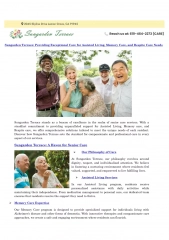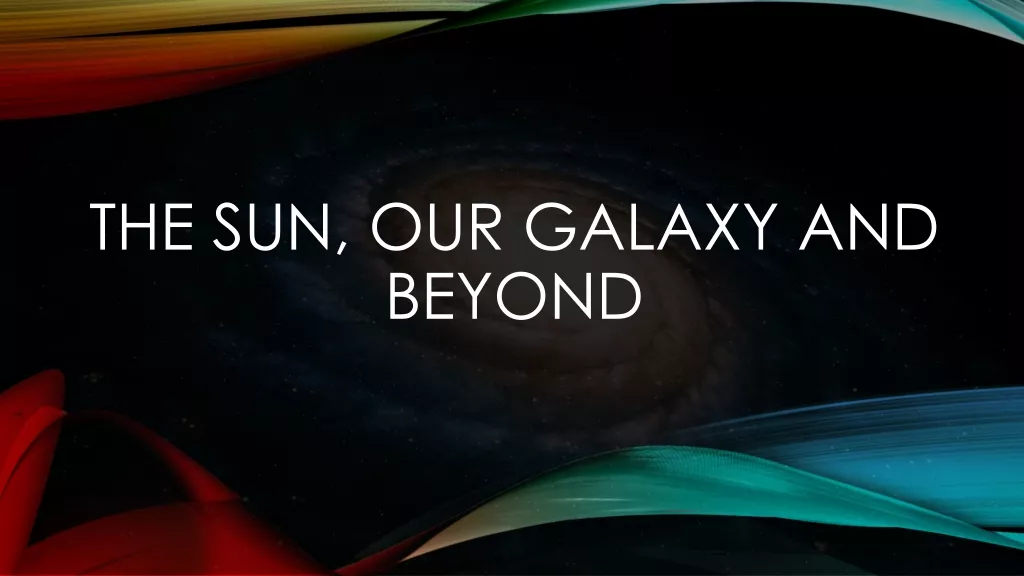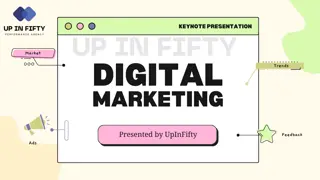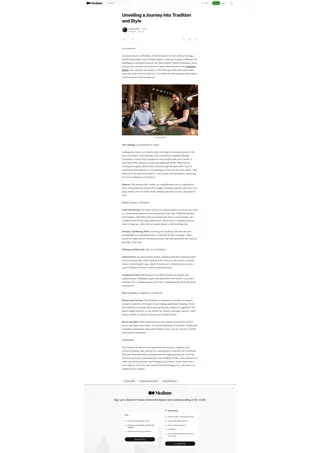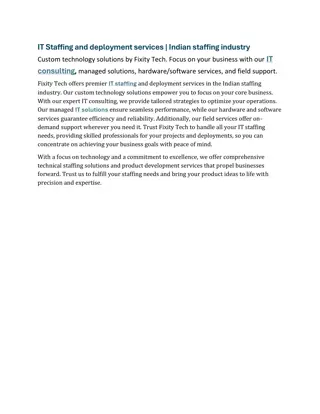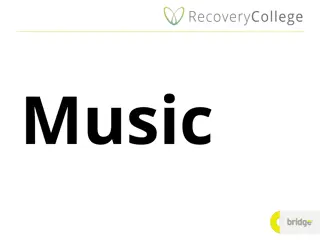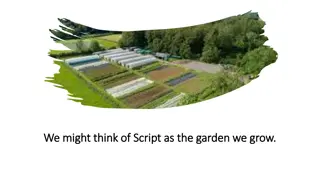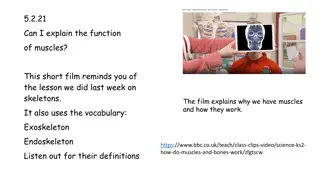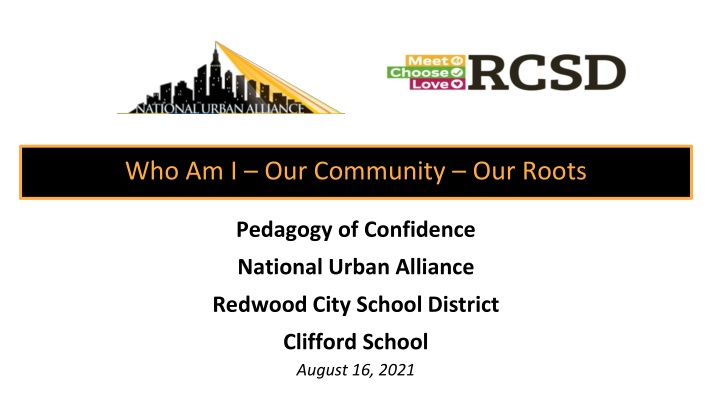
Exploring Pedagogy of Confidence Through Community Connections
Delve into the Pedagogy of Confidence within the context of community roots and identity. This presentation showcases practices such as critical thinking, social-emotional learning, and culturally responsive teaching. It emphasizes high operational practices for student empowerment and equity consciousness, all aimed at fostering belief, belonging, and enrichment in educational settings.
Download Presentation

Please find below an Image/Link to download the presentation.
The content on the website is provided AS IS for your information and personal use only. It may not be sold, licensed, or shared on other websites without obtaining consent from the author. If you encounter any issues during the download, it is possible that the publisher has removed the file from their server.
You are allowed to download the files provided on this website for personal or commercial use, subject to the condition that they are used lawfully. All files are the property of their respective owners.
The content on the website is provided AS IS for your information and personal use only. It may not be sold, licensed, or shared on other websites without obtaining consent from the author.
E N D
Presentation Transcript
Who Am I Our Community Our Roots Pedagogy of Confidence National Urban Alliance Redwood City School District Clifford School August 16, 2021
Community Commonalities
Commonalities Other Ideas mathematics music science storytelling a COVID experience places your ideas
Retaining for Understanding Priming Processing Community Belief & Belonging Critical Thinking Thinking Maps Writing Reflecting Structure
Social Emotional Learning
7 Culturally Responsive Teaching Practices That are Sustaining for SEL The 4 Cs Communication Collaboration Creativity Critical Thinking
High Operational Practices (HOPS) of the Pedagogy of Confidence: Identifying and activating student strengths Eliciting high intellectual performance Integrating prerequisites for academic learning Situating learning in the lives of students for enhancing and sustaining equity consciousness Building relationships Belief and Belonging Providing enrichment Amplifying student voice 8
The two most important days in life are the day you born and the day you discover the reason why. Mark Twain Who Am I
Purpose The Why The How SEL Critical Thinking Tools for SEL Belief and Belonging Community - Classroom AND School 10
Day 2 Day 5 Day 1 Day 3 Day 4 Priming Community Connecting Modeling and Building Upon Commonalities. Processing A Language for Organizing and Understanding Critical Thinking Thinking Maps Retaining for Understanding A Pattern of Writing Writing Reflecting
Community Commonalities
Draw a picture of yourself. (several key features)
Draw a picture of yourself. (several key features) Add your name.
Draw a picture of yourself. (several key features) Add your name. Add circle.
Draw a picture of yourself. (several key features) Add your name. Add circle. Add information about me
Draw a picture of yourself. (several key features) Add your name. Add circle. Add information about me Add circle around information
Writing with a Circle Map I like ice cream. I like dinosaurs. I like the ocean. I am fast.
I like ice cream. I like dinosaurs. I like the ocean. I am fast.
Writing with a Circle Map with a Frame I like ice cookies and cream. I like seeing dinosaurs at the museum. I like reading about dinosaurs. I like the ocean. I am fast. my favorite is cookies and cream reading museum
Whitney will be on site that week of doing Who Am I SEL to Collaborate and Support Sharing Meeting as a whole team to reflect on implementation
Community Commonalities for Cause / Effect
cause event effect Multi-Flow Map: Cause and Effect 25
Write Who Am I. with staff or your classroom, students write or draw a key event of their lives event Who Am I
Write Who Am I. Draw a rectangle around Who Am I event Who Am I
Write Who Am I. Draw a rectangle around Who Am I Add effects in words or drawings event effect knowing each other Who Am I common tools
Write Who Am I. Draw a rectangle around Who Am I Add effects in words or drawings Add rectangle around effects event effect knowing each other Who Am I common tools
Write Who Am I. Draw a rectangle around Who Am I Add effects in words or drawings Add rectangle around effects Add causes (and more effects too) cause event effect knowing each other Who Am I common tools
Write Who Am I. Draw a rectangle around Who Am I Add effects in words or drawings Add rectangles around effects Add causes (and more effects too) Add rectangles around causes cause event effect knowing each other Who Am I common tools
Who Am I is for the whole school and every classroom. cause event effect A cause of doing Who Am I is ________________. Another cause _______________. knowing each other An effect of doing Who Am I is _______________. Who Am I common tools Another effect is _______________. The most important thing about Who Am I is ________. I hope ____________________.
knowing each other knowing each other Who Am I Who Am I Who Am I Who Am I common tools common tools Who Am I is for the whole school and every classroom. knowing each other A cause of doing Who Am I is ________________. Who Am I Another cause _______________. common tools Who Am I An effect of doing Who Am I is _______________. Another effect is _______________. The most important thing about Who Am I is ________. I hope ____________________.
Share one key event of your life. 34
cause event effect Key Event
cause event effect Who Am I Multi-Flow Map: Cause and Effect + Frame of Reference
cause event effect Who Am I Who How Regularity Trends Roles Multi-Flow Map: Cause and Effect + Frame of Reference
Day 2 Day 5 Day 1 Day 3 Day 4 Priming Community Connecting Modeling and Building Upon Commonalities. Processing A Language for Organizing and Understanding Critical Thinking Thinking Maps Retaining for Understanding A Pattern of Writing Writing Reflecting
Week 1 Week 2 Week 3 Who Am I Our My Roots Community 39
Video (5 min) First Viewing: Observe and reflect about the thinking on SEL: How are student strengths being identified and activated through SEL? How is the classroom supportive with high intellectual performances (HIPs) through SEL? 40
CASEL (5 min. 30 sec.) Schoolwide SEL: SEL Integrated with Academic Instruction Discover ways to integrate SEL into daily academic instruction using social and emotional competencies as the foundation for achieving academic goals. Developed in partnership with the Collaborative for Academic, Social, and Emotional Learning (CASEL), this video is part of a series that provides practical applications for educators pursuing high-quality, schoolwide SEL. 41
Video (5 min) Your reflections about Integrating SEL How are student strengths being identified and activated through SEL? How is the classroom supportive with high intellectual performances through SEL? 42
SEL Talk, SEL Walk Key take away from our time together. How will you integrate Who Am I? How does this unit benefit all students in the whole school? What supports would you appreciate to implement? 43
Thinking Maps as a Language Describing in Context Brainstorming Comparing & Contrasting Categorizing Describing Sequencing Cause and Effect Whole / Part Analogies Relationships To Organize Thinking Student Centered
Schema Definition: Schema theory is a branch of cognitive science concerned with how the brain structures knowledge. A schema is an organized unit of knowledge for a subject or event. It is based on past experience and is accessed to guide current understanding or action.
Frame of Reference Schema 46
Frame of Reference Schema Situating Learning in the Lives of Students 47
Schema Text to Self Text to Text Text to World Schema is the background knowledge and experience readers bring to the text. Good readers draw on prior knowledge and experience to help them understand what they are reading and are thus able to use that knowledge to make connections.
Text-to-Self What does this remind me of in my life? What is this similar to in my life? How is this different from my life? Has something like this ever happened to me? How does this relate to my life? What were my feelings when I read this? Text-to-Text What does this remind me of in another book I ve read? How is this text similar to other things I ve read? How is this different from other books I ve read? Have I read about something like this before? Text-to-World What does this remind me of in the real world? How is this text similar to things that happen in the real world? How is this different from things that happen in the real world? How did that part relate to the world around me?
High Operational Practices (HOPS) of the Pedagogy of Confidence: Identifying and activating student strengths Eliciting high intellectual performance Integrating prerequisites for academic learning Situating learning in the lives of students for enhancing and sustaining equity consciousness Building relationships Belief and Belonging Providing enrichment Amplifying student voice 50

